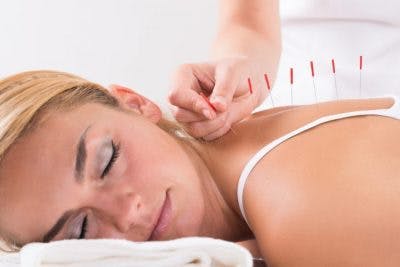Can a Stroke Patient Get Sensation Back but Not Movement
Numbness after stroke is a common secondary effect that causes loss of sensation in some of the affected areas. It can be accompanied by other sensory issues such as tingling sensations and even hypersensitivity.
For some people, post-stroke numbness goes away on its own through the phenomenon of spontaneous recovery. For those who still experience some degree of numbness, rehabilitation methods should be explored to help promote the return of sensation after stroke.
Here's everything you need to know about numbness after stroke, including the causes, treatments, and the recovery process.
What Causes Numbness After Stroke?
In order to understand numbness after stroke, you must first understand how a stroke affects the body.
A stroke occurs when blood flow in the brain becomes obstructed. When brain cells become deprived of oxygen-rich blood, they begin to die and lose their functions.
The area of the brain affected by stroke determines the secondary effects that occur. For example, if the area of the brain that regulates sensation is affected, it may result in impaired sensation like numbness.
Regarding post-stroke numbness, two areas of the brain deserve a deeper look: the thalamus and occipital lobe.
The thalamus is responsible for interpreting 98% of all sensory input. In a related manner, the occipital lobe differentiates this input from the five senses, including touch.
Therefore, post-stroke numbness is commonly seen after a thalamic stroke or occipital lobe stroke because these areas of the brain play a large role in sensory function.
Even if a stroke does not impact these areas of the brain, numbness may occur. It's important to seek advice from your therapist if you struggle with any sensory issues.
How Long Does Numbness Last After Stroke?

Since every stroke is different, everyone will recover at different rates. Some stroke patients may experience spontaneous recovery where sensation returns on its own. If this happens, it usually occurs within the first few months of recovery.
However, if sensation does not return on its own, then rehabilitation should be pursued. The amount of time it takes to recover numbness depends on factors unique to every person, including the location of the stroke and intensity of rehabilitation.
Recovery Depends on Intensity of Rehabilitation
The intensity of rehabilitation has a particular impact on recovery from the effects of a stroke.
Studies have shown that stroke patients recover rapidly during the first 3 months but may remain at this level even at the 5 year mark if rehabilitation is not continued. Researchers theorize that the intensity of inpatient rehabilitation and lack of post-acute care is to blame for this unfortunate phenomenon.
This does not mean that patients cannot overcome numbness after stroke even if it has been longer than 3 months. Instead, it means that rehabilitation should be pursued well after the 3 month mark in order to maximize recovery.
Even when neurological recovery has slowed, functional recovery can continue for a lifetime.
Treatment Methods for Numbness After a Stroke
Next, you'll learn different rehabilitation methods to help promote the return of sensation after stroke. You can pursue them at home on your own or with the help of your therapist.
By participating in treatment and rehabilitation for post-stroke numbness, you can maximize your chances of sensation returning to the affected area.
Here are the best treatments and rehabilitation methods for numbness after stroke:
1. Sensory Retraining Exercises

Post-stroke numbness is different from other types of numbness because the issues originate from the brain, not the local tissue. Therefore, the most popular way of treating numbness is through sensory retraining, also called sensory reeducation.
This rehabilitation method relies on a process called neuroplasticity: the brain's natural ability to reorganize and rewire itself and learn new functions.
Sensory retraining seeks to retrain the brain how to interpret your senses by practicing different exercises that involve touch.
For example, you can gather objects of different textures (like rough sandpaper, fluffy cotton balls, silky material) and feel them without looking. Then, look at the object to provide yourself with feedback.
Although sensory retraining exercises can be exceptionally difficult in the beginning (especially if there is no sensation at all) the goal is to slowly rewire the brain through repetitive stimulus.
Your physical therapist or occupational therapist can provide more information about sensory retraining exercises.
Learn more about sensory retraining after stroke »
2. Electroacupuncture

Acupuncture is an alternative treatment that involves inserting thin needles into specific acupoints on the body. Sometimes electrical stimulation is applied to the needles after insertion, which is called electroacupuncture.
Studies have shown that electroacupuncture helps encourage neuroplasticity in stroke patients with somatosensory deficits (like numbness).
The study noted that patients showed greater response to tactile stimulation (like sensory retraining exercises) than electroacupuncture, but both enhanced neuroplasticity and recovery from stroke.
Learn more about acupuncture for stroke recovery »
3. Mirror Therapy
Mirror therapy is most commonly used to promote motor recovery in the hand after a stroke, especially when hand movement is severely affected. This makes it a great rehabilitation method for post-stroke hand paralysis.
Furthermore, mirror therapy has also been shown to help improve sensation after a stroke.
It works by placing a tabletop mirror over the person's affected hand. Then, the survivor practices various hand therapy exercises with their unaffected hand while watching their reflection. This helps activate mirror neurons in the brain and encourages neuroplasticity.
Learn more about mirror therapy »
A Note on Safety and the Importance of Rehabilitation
Treatment for numbness after stroke should be taken seriously because the inability to feel poses certain risks.
For example, let's say that you cannot feel your affected arm, and you decide to cook yourself lunch by boiling some pasta on the stove. If you aren't paying close attention, you run the risk of accidentally brushing up against the stove or boiling pot and burning yourself without realizing it.
Getting dressed provides another example. If you cannot feel your affected leg or foot, you run the risk of fastening your shoe too tightly, which can lead to abrasions or wounds.
Therefore, if you struggle with numbness after a stroke, it's important to stay extremely cautious of your affected side at all times.
For the best treatment, seek help from an occupational therapist who can help you get started with sensory retraining and encourage the return of sensation after stroke.
Recovering Sensation & Feeling After Stroke
Numbness after stroke occurs when the brain cannot process sensory input from the skin. It's not caused by issues with the skin; instead, it's caused by the brain's inability to process sensory information.
Sometimes feeling returns to the area on its own (spontaneous recovery). Other times, rehabilitation is required to harness the power of neuroplasticity and help retrain the brain to process sensory information (such as your sense of touch).
Some helpful rehabilitation methods include sensory retraining exercises, mirror therapy, and even electroacupuncture. Ask your therapist to help you get started with sensory retraining. You can also ask for any tips to improve your safety during your daily life, such as exercising caution in the kitchen.
Most importantly, never give up hope. Whether or not you experience spontaneous recovery, your chances of recovery improve when you take action. We wish you the best of luck on the road to recovery.
Can a Stroke Patient Get Sensation Back but Not Movement
Source: https://www.flintrehab.com/numbness-after-stroke/
0 Response to "Can a Stroke Patient Get Sensation Back but Not Movement"
إرسال تعليق